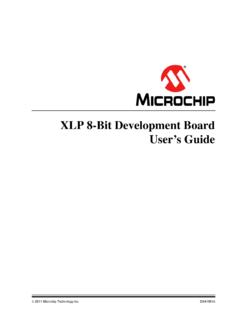Transcription of PROC FORMAT: An Analyst’s Buddy - SAS
1 Paper 084-31 PROC format : An analyst s Buddy Ben Kupronis, Centers for Disease Control and Prevention, Atlanta, GA ABSTRACT PROC format provides essential tools for simplified coding and program efficiency that are often overlooked by novice users. This paper presents basic formatting techniques using the VALUE statement and useful permanent formats. More advanced techniques are presented such as the utility of picture formats and conversion of databases to formats. All these tips avoid re-coding data in the DATA step and create catalogs, which can streamline workflow.
2 INTRODUCTION PROC format is an often overlooked procedure for manipulating data during analysis. Sure it lacks the power of the DATA step or the utility of other procedures such as FREQ, TABULATE, or REPORT. But what it lacks in sex appeal it more than makes up in utility. This paper will describe specific ways PROC format can make an analyst s job easier as well as provide some of my favorite tricks. THE BASICS SAS novices think output from a procedure has to be the literal values that are stored in the dataset.
3 However, PROC format can change the ambiguous gender of 0 and 1 into male and female. data one ; do j=1 to 100; sex=round(ranuni(0)); sex2=sex; output; end; run; proc format ; value sexfmt 1="Female" 0="Male"; run; proc tabulate data=one; class sex sex2; tables sex="Original Gender Value",sex2="Formatted Gender Value"; format sex2 sexfmt.; run; Output: Formatted Gender Value Male Female N N Original Gender Value 0 45.
4 1 . 55 SAS likes the format type to match the type of variable (character or numeric). The last example used a numeric format . We could have made the format character by simply naming it $sexfmt. to match a character sex variable. 1 Data PresentationSUGI31 Formats are efficient. Smaller size variables take up less space in a dataset and will cause a 4 million observation dataset to run substantially faster. Take the example of ICD-9 codes (International Classification of Diseases, 9th revision) which are used in medicine to code diseases.
5 We could store SEPTICEMIA DUE TO OTHER GRAM-NEGATIVE ORGANISMS or we could store 0384 or depending on whether we like character or numeric values. The long character value had a length of 50, but the coded character value had a length of 5 which will be more efficient. It also has the benefit of being infinitely easier to code if you are writing a WHERE expression. Another very common use for PROC format is to collapse data without having to recode the data. Systolic blood pressure is a continuous value. You could recode the data as: data bp; set bp; length Interpret $21; if bp < 120 then Interpret="Normal"; else if 120 <= bp < 140 then Interpret="Prehypertension"; else if 140 <= bp < 160 then Interpret="Stage 1 Hypertension"; else Interpret="Stage 2 Hypertension"; run; proc tabulate data=bp; class Interpret; tables Interpret="" all="Total",(N pctn)/box="Interpretation"; run.
6 Output: Interpretation N PctN Normal 106 Prehypertension 189 Stage 1 Hypertension 169 Stage 2 Hypertension 36 Total 500 The same exact output can be generated using a format . Note less than symbol and keywords in ranges. The less than symbol can appear on either side of the dash to exclude the value listed. Proc format ; value BPInterp low-<120="Normal" 120-<140="Prehypertension" 140-<160= "Stage 1 Hypertension" 160-high="Stage 2 Hypertension" ; run; proc tabulate data=bp ; class bp; tables bp="" all="Total",(N pctn)/box="Interpretation"; format bp BPInterp.
7 ; run; To illustrate the efficiency of PROC format , I created a dataset with half a million observations that is over a gigabyte in size. My computer took 3 min 51 sec to recode the data then another 52 seconds to tabulate. This is a grand total of 4 min 43 sec of processing time for the inefficient code. PROC format used less than a second and the PROC TABULATE using the format took 27 seconds to run. The efficient code is more than 10 times faster in 2 Data PresentationSUGI31 this example. Formats also keep the dataset width to a minimum which also speeds up all SAS processes, including those that do not use formats because SAS has to read through less data at every step.
8 Date formats are another great time saver. All the formats that have been used so far are called user defined formats. SAS also makes our life easier by providing pre-defined formats. No PROC format is required. Here are some of my favorite pre-defined formats. Category format Description Character $CHARw. / $w. Writes character data with a length of w Date and Time DATEw. SAS date values, DATE9. = 26 MAR2006 SAS datetime values, 26 MAR2006 = 26 MAR2006:03:49 DTMONYYw.
9 SAS datetime values, extracts month and year DTMONYY7. = OCT2006 DTYYQCw. SAS datetime values, extracts year and quarter DTYYQC6. =2006:1 MMDDYYw. SAS date values, MMDDYY10. = 03/26/2006 MONYYw. SAS date values, MONYY7. = MAR2006 WEEKUw. SAS date values, WEEKU5. = 06W13 YEARw. SAS date values, YEAR4. = 2006 YYMMDDw.
10 SAS date values, YYMMDD10. = 2006-03-26 YYQw. SAS date values, YYQ6. = 2006Q1 Numeric BESTw. SAS chooses the best notation = 16, SSNw. SSN. = 123-45-6789 For value , format = For value , = 3 Data PresentationSUGI31 As an example of efficiency and ease, consider a quarterly report. You could use the DATA step to code each quarter from the date and then run a PROC FREQ or just use a format in a single step with PROC FREQ.










